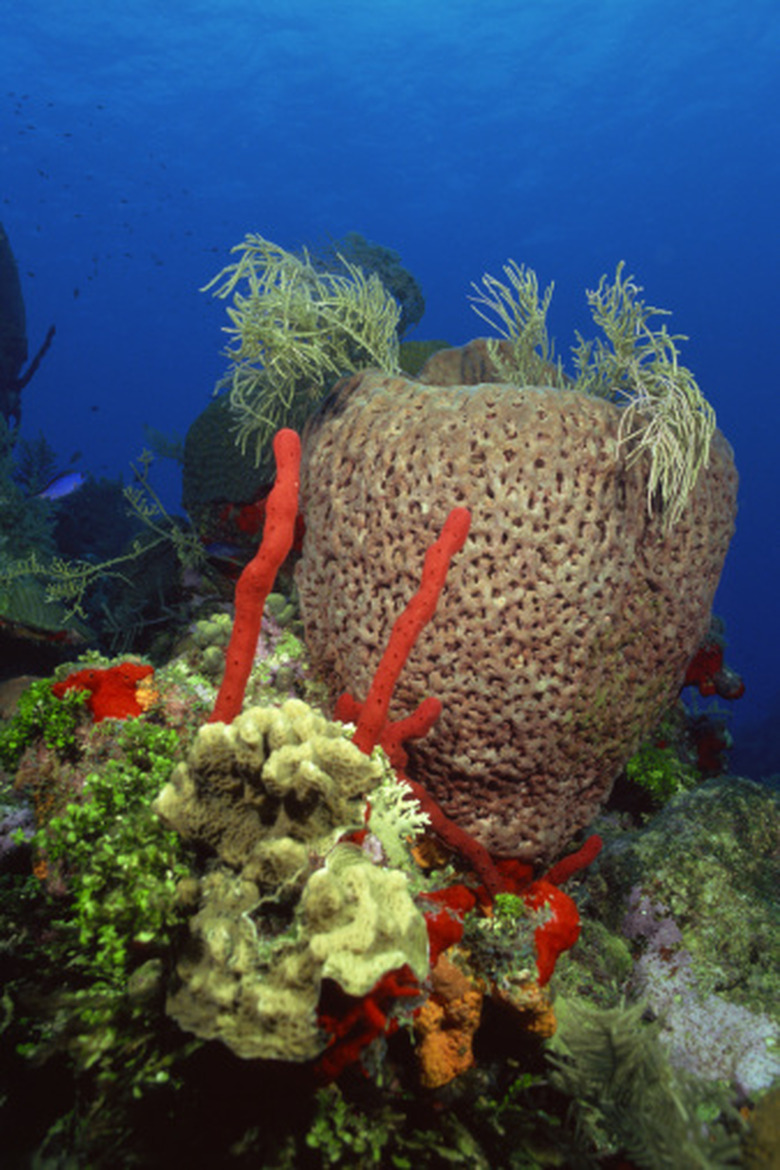About The Seasons In The Marine Biome
The marine biome is the world's largest biome and is characterized by the presence of salt water. The marine biome covers over 70 percent of the surface of Earth and is made up of 97 percent of all of the water on the planet.
The marine biome can be found in all of the world's oceans, seas and coastal habitats such as estuaries. Because it can be found in all areas of the world, the marine biome experiences a large amount of variability in terms of species composition and environmental conditions that exist there.
Seasons in the Marine Biome
Seasons in the Marine Biome
Seasons are periods of the year that are marked by distinct weather and light patterns. Typically, seasons are affected by the movement of Earth around the sun, combined with the tilt of Earth's axis.
Seasons in the marine biome are not the typical four seasons that we experience on land, and marine organisms do not experience winter, spring, summer, and fall. Seasons in the marine biome are indistinct, but marine biome climate conditions can change throughout the year and depending on location.
Marine Biome Climate
Marine Biome Climate
Climate refers to the prevailing weather conditions in an area over a long period of time, such as throughout the year. The marine biome climate can be described in a general sense but many factors contribute to the variability of marine biome climate conditions.
Factors that influence weather in the marine biome include:
- Ocean depth
- Location relative to land
- Latitude
- Temperature
- Salinity
The average marine temperature is approximately 39 degrees Fahrenheit. Marine temperature generally decreases as water depth increases, and is generally warmer near the equator than at the poles.
Average marine temperature fluctuates throughout the year and across the oceans depending on varying environmental factors. Marine temperature affects the types of living things that can exist in the marine biome.
Marine Biome Precipitation
Marine Biome Precipitation
The marine biome absorbs the majority of the sun's energy and is the largest heat reservoir on Earth. Covering almost three-quarters of the earth's surface, the marine biome is also the principal source of evaporation and precipitation.
About 86 percent of global evaporation and 78 percent of global precipitation occur as marine biome precipitation. The marine biome holds more than 23 times more water than is stored on land masses, and 1 million times more water than is stored in Earth's atmosphere.
The patterns of marine biome precipitation and evaporation are affected greatly by latitude. Marine waters near the equator and mid-latitudes tend to be dominated by evaporation due to higher temperatures and the presence of trade winds. Ocean waters in the higher latitudes tend to gain more fresh water due to marine biome precipitation.
Salinity (saltiness) of marine water is affected by marine biome precipitation and evaporation. Patterns of salinity across the oceans provide information about the global water cycle as it occurs within the marine biome. When ocean water evaporates, salt is left behind, causing salinity to increase locally. When it rains over the marine biome, fresh water is added to salt water and salinity decreases.
Marine Biome Weather
Marine Biome Weather
Weather is a description of atmospheric conditions at a specific time and place, including factors such as temperature, humidity, precipitation and cloud cover. Marine biome weather is extremely variable as the oceans cover a large portion of Earth. Some of the same factors that affect the weather in the marine biome are water depth, salinity, and proximity to a land mass.
Atmospheric weather patterns are less relevant in the marine biome than on land-based biomes because the majority of organisms in the marine biome live underwater. Shallow coastal ecosystems may be affected by storms and other weather events more than deep ocean ecosystems.
For example, a large rain event would cause excess runoff of fresh water from rivers to rush into the ocean, changing the salinity of the ocean water in a coastal area.
Humans and the Marine Biome
Humans and the Marine Biome
Many people rely on the world's oceans for their livelihood. While atmospheric factors can greatly affect the conditions within the marine biome, so too can human activity. About 80 percent of all marine pollution is source from land-based activities.
Examples of human activities that negatively influence the marine biome include:
- Global climate change
- Overfishing
- Agricultural runoff
- Industrial discharge
- Oil spills
- Invasive species
- Air pollution
There are several possible long-term solutions for protecting the world's oceans from destructive human activities. In order to protect marine biodiversity, it is necessary to establish protected areas such as national parks and reserves.
Reducing destructive fishing practices and accidental fish kills (such as dolphin caught in tuna nets) would also help protect marine biodiversity and replenish fishing grounds. Minimizing the use of military sonar technology would protect whales and other marine mammals as well.
Cite This Article
MLA
Reinbold, Joan. "About The Seasons In The Marine Biome" sciencing.com, https://www.sciencing.com/seasons-marine-biome-8660255/. 22 November 2019.
APA
Reinbold, Joan. (2019, November 22). About The Seasons In The Marine Biome. sciencing.com. Retrieved from https://www.sciencing.com/seasons-marine-biome-8660255/
Chicago
Reinbold, Joan. About The Seasons In The Marine Biome last modified August 30, 2022. https://www.sciencing.com/seasons-marine-biome-8660255/
